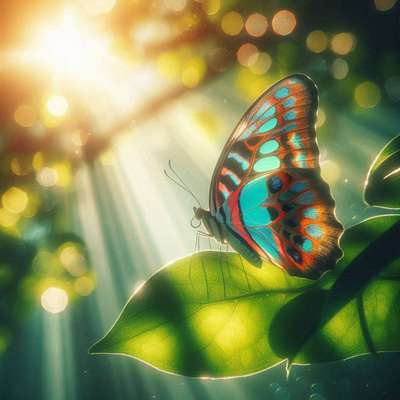The Importance of Nectar in Butterflies eat
Nectar plays a crucial role in the diet of adult butterflies, serving as their primary source of energy and nutrition. These delicate insects, comprising over 17,500 species worldwide, rely heavily on flower nectar for survival. A butterfly's proboscis, which can be up to 2-3 times its body length, is perfectly adapted for sipping nectar from deep within flowers.
On average, butterflies visit between 50 to 100 flowers per day, consuming approximately 10-15% of their body weight in nectar. This sugar-rich liquid provides essential carbohydrates, powering their flight and supporting vital bodily functions. Some species, like the Monarch butterfly, can fly up to 2,500 miles during migration, fueled primarily by nectar.
Interestingly, nectar composition varies among flower species, with sugar concentrations ranging from 20% to 50%. Butterflies generally prefer nectars with 20-25% sugar content. Additionally, nectar contains trace amounts of amino acids, which can constitute up to 0.5% of its dry weight, contributing to butterfly nutrition and reproductive success.
On average, butterflies visit between 50 to 100 flowers per day, consuming approximately 10-15% of their body weight in nectar. This sugar-rich liquid provides essential carbohydrates, powering their flight and supporting vital bodily functions. Some species, like the Monarch butterfly, can fly up to 2,500 miles during migration, fueled primarily by nectar.
Interestingly, nectar composition varies among flower species, with sugar concentrations ranging from 20% to 50%. Butterflies generally prefer nectars with 20-25% sugar content. Additionally, nectar contains trace amounts of amino acids, which can constitute up to 0.5% of its dry weight, contributing to butterfly nutrition and reproductive success.
Beyond Nectar: Alternative Food Sources
While nectar from flowers is the primary food source for most of the 17,500+ known butterfly species, these insects have diverse dietary habits beyond floral nectar.
Approximately 75% of butterfly species engage in "mud-puddling," a behavior where they extract essential minerals from damp soil, animal waste, or decaying organic matter. Some butterflies, like the Red Admiral, are known to feed on tree sap, which can contain up to 10% sugar content.
Surprisingly, about 100 butterfly species worldwide are fruit-feeders, preferring overripe or rotting fruits.
These fruits can have a sugar content of 15-20%, providing a rich energy source. A small percentage, roughly 1-2% of butterfly species, have more unusual diets. For instance, some tropical butterflies feed on carrion or animal dung, while others, like the harvester butterfly (Feniseca tarquinius), are carnivorous and prey on aphids.
In times of scarcity, butterflies may obtain moisture and nutrients from mud puddles, tears of larger animals, or even human sweat, which contains about 0.3-0.4% salt.
Approximately 75% of butterfly species engage in "mud-puddling," a behavior where they extract essential minerals from damp soil, animal waste, or decaying organic matter. Some butterflies, like the Red Admiral, are known to feed on tree sap, which can contain up to 10% sugar content.
Surprisingly, about 100 butterfly species worldwide are fruit-feeders, preferring overripe or rotting fruits.
These fruits can have a sugar content of 15-20%, providing a rich energy source. A small percentage, roughly 1-2% of butterfly species, have more unusual diets. For instance, some tropical butterflies feed on carrion or animal dung, while others, like the harvester butterfly (Feniseca tarquinius), are carnivorous and prey on aphids.
In times of scarcity, butterflies may obtain moisture and nutrients from mud puddles, tears of larger animals, or even human sweat, which contains about 0.3-0.4% salt.



